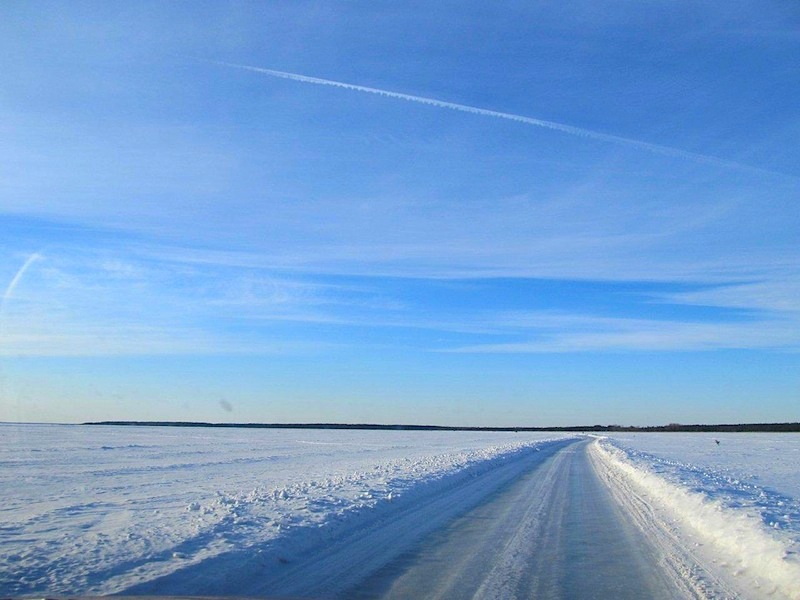“Road signs” include sprigs of juniper and pine dotted along the route to serve as markers in conditions of poorer visibility. No such problems as of late. Instead, an interesting tug of war (vägi/kaika/vedamine) has been going on off Estonia's coastlines for the past month: blazing sun by day and extremely cold temperatures by night.
National ice and snow accumulations maps may can be found at emhi.ee > ilma/vaatlused (weather observations), although the numbers stating ice thickness may be questionable, i.e. leaning on the side of caution. I've spoken to someone who has driven the (not officially opened) ice road between Saaremaa and Hiilumaa on two weekends in late märts. He made the 18 km trip in 33 minutes, having faith in the locals whose test drilling holes (proovi/puurimised) revealed the ice was 60-80 cm thick.
Estonian ice roads are only open during daylight hours. Recommended traveling speeds are under 25 km/h (16 mph) or between 40–70 km/h (25–43 mph) with a distance of 250 m or two minute intervals between vehicles. More information, including an ice road map can be found on the Maanteeamet website (mnt.ee) > maanteeinfo > jäätee.
The preferred beverage for a trip across a jää/tee (ice road) is naturally jää/tee (iced tea). We brought along a can of tuna (tuuni/kala) on the off chance we might spot a hungry seal…
Riina Kindlam, Tallinn




